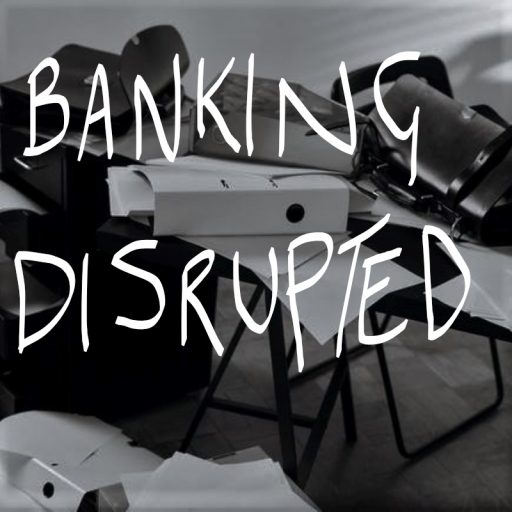There are many beliefs held about what behaviours and activity drive employee engagement in the workplace. With so much research, literature, and white papers on this topic, why are less than 20% of the workforce feeling truly engaged. This is one of the main headlines coming out of the 2018 ADP Research Institute report, on employee engagement across 19 countries. This is the core idea that is explored in Nine lies about work.
The hypothesis is that there are nine core beliefs, or myths, that are so entrenched in the workplace they have never been challenged rigorously to assess whether they are still valid. Nine lies examines just that and poses nine more realistic practices of enabling people to feel more involved and engaged in the workplace. The idea being that for any organisation looking to drive sustainable growth, innovation and attract talent, some recalibration is needed. Axioms that no longer serve the people, and if those individuals are core to running a successful business, need to be replaced… urgently.
Big Messages/Key Quotes :
The book is summarised in the table below, where the Core Belief (Lie) is analysed, and then replaced with a better finding.
| Lie (or Myth) | Why this belief is untrue… | A better construct to have in place… |
|---|---|---|
| 1. People care which company they work for | It is the experience of work that matters, not the company culture. Most companies miss how important team membership is to employees. | It is the experience of work that matters, not the company culture. Most companies miss how important team membership is to employees. When we realise that people feel engaged when they are undertaking meaningful work it becomes easier to understand how to drive performance…build great teams that individuals want to be part of as they want to do “real” work |
| 2. The best plan wins | A significant percentage of time in large organisations is spent in planning…everything from assessing market sizing, doing a SWOT analysis, financial modelling, competitor analysis etc. The problem with this approach is the world moves to fast, and as soon as a plan is completed, the world has moved on | It is the experience of work that matters, not the company culture. Most companies miss how important team membership is to employees. When we realise that people feel engaged when they are undertaking meaningful work it becomes easier to understand how to drive performance…build great teams that individuals want to be part of as they want to do “real” work |
| 3. The best companies cascade goals | Goal setting is part of the core DNA of any organisation, specifically in sales. However, the process of setting sales goals does not in its own right lead to increased sales. In fact, the process of setting sales targets as a means of driving performance is counter intuitive. In the case of high performing salespeople, there is a tendency to “bank” revenue when targets are met, to help with next year’s number | An example of strategies that help drive superior performance, perhaps that bear no relationship to goalsetting, are as follows: Expressed values which show, and not tell, employees what is expected of them Creating rituals that help everyone to understand a company’s purpose e.g., Facebooks bimonthly hackathons Storytelling can also play a significant role in driving organisational performance. Many of the best leaders we see are excellent storytellers, as they know sharing real-life experience is a great way to show the result of values in action |
| 4. The best people are well-rounded | Data shows that the most significant predictor of a teams’ productivity, and the ability to create and drive value, is based upon each team member having a sense that they can use their strengths daily There is a difference between an ability and a strength – something you are good at is an ability, a strength on the other hand is an activity that makes you feel strong | The idea is to expand the traditional competency model that assumes all individuals need to excel across certain predetermined attributes. Reality suggests that the uniqueness of individuals is what allows them to be better performers, which does not naturally fit into a framework. Respecting uniqueness and diversity needs to be a key facet of any individual or team framework that is put into place |
| 5. People need feedback | It is well understood that many organisations focus on giving and receiving feedback as a primary mechanism for people to develop themselves. The idea here is that people improve because of negative feedback, as it spurs them into action to course correct. Feedback in this sense has the opposite effect and hinders performance. The rationale for this is summarised well by psychologist Rick Hanson at Berkeley: “the Brain is like Velcro for negative experiences, but Teflon for positive ones” | If feedback does not help to put individuals in a learning or productive mindset, then what other options are available to drive growth? What most people need is for their contribution to be seen, and for it to be valued through having attention focused on what they are doing well. This acts as a better catalyst for individual growth, as opposed to listing out and focusing on a person’s “deficiency” If care is taken to amplify great work, it makes the process of coaching on the not so positive outcomes easier; especially if positioned well (see Edward Shien’s book, Humble Inquiry for tips in this space) |
| 6. People can reliably rate other people | This area is perhaps the easiest to understand. It is well known that one of the challenges people have is the inability to evaluate another well. When it comes to year-end reviews and appraisals, the process is flawed as one individual only has their own experience of another individual. This is hence not a great way of having a look at how well someone has done during the year, nor is it a good indicator of their future potential | Better strategies that can rate a person performance, need to build on the idea that an individual can very accurately rate their experience of you, by how they react to you. Adding a series of ratings together from several individuals asked the same set of questions to measure competency, may not be perfect… but it is better than having one set of completely unreliable data |
| 7. People have potential | Roll out the famous 4-6-9 box grid! Most companies will painstakingly go through the process of plotting their employees on this grid, with the aim of identifying Top Potential/Talent. But…potential is not a trait, so cannot be measured. On top of that add the fact that people are not particularly good at rating the ability of another, so this is not a measure that helps anyone | To move away from a grid-based process necessitates re-defining what is meant by “potential” in an organisation. Typically, agnostic of the group of traits, attributes, and characteristics, potential equates to the ability to learn, and move at pace through whichever career journey if being pursued. Potential hence becomes more about an individual’s Adaptive Co-Efficient (AQ); their ability to re-pivot, move, accelerate, and drive when conditions change |
| 8. Work-life balance matters most | The most overly utilised concept across HR departments in the world. Balance in any life is the holy grail of existence, so it’s not a “thing” that gets achieved. There is also an implication that work is draining, and life is energising, when one if in fact a sub-set of the other. | There are no strategies for this area, as the element that needs to be addressed is to try and find the work you love doing. Which sounds cliché as utopian jobs, in the main do not exist, so what can be done? It is important to learn how to help individuals play to their strengths i.e., which bits of their job make them feel stronger, and help them stay in a positive mind-set. All roles will have elements that are energising and draining, the key is to ensure that the balance does not tip the wrong way. The same can be said for life! |
| 9. Leadership is a thing | Rule number 1 of leadership…its not a thing. See all the above | Willing followership is perhaps the only way to measure leadership People tend to follow people who care about the things they care about and are in turn great at that those things they care about. We follow the spikes as these are things we can hook onto. The world of leadership is all about the world of followership, which is fundamentally based on human interactions and relationships. |
Why read this book?
Quite simply if you are running a team, and only have time to read one book this year to make you a better team leader, this is the one. All the context and ideas presented here are applicable for every level of leadership, from newbies to veterans. This book should be viewed as reference material for any organisation looking to build better teams across its business, and therefore reap the rewards in terms of both employee well-being and financial returns.




